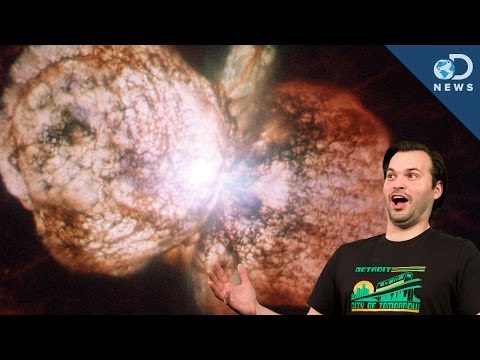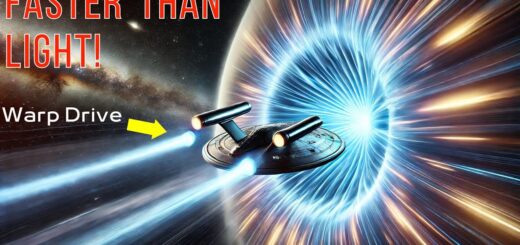Russian Nuclear Weapons in Space? Here’s What We Know. | WSJ
– [Narrator] Alarm and confusion have gripped Washington. – The US has new intelligence. – Of a quote “Serious national security threat.” – Nukes in space, really? – [Narrator] New intelligence suggests that Russia may be developing nuclear weapons to be used in space. Although details of the classified intelligence are slim, space policy experts said that, “The technology could be used against American satellites, raising questions about Russia’s intentions and the potential ramifications of an orbital damnation.” – I think this is a wake-up call. What Russia is doing is unprecedented, extremely dangerous, and destabilizing. – [Narrator] The disclosure of the intelligence was first made public by Chairman of the House Intelligence Committee, Mike Turner. On February 14th, Turner issued a cryptic statement about an unspecified, “Serious national security threat, and called on the Biden administration to declassify the information.” The White House wouldn’t say if the new Russian system had a nuclear component, but it did confirm that Russia’s pursuing what it called an Antisatellite capability. – This is not an active capability that’s been deployed, and though Russia’s pursuit of this particular capability is troubling, there is no immediate threat to anyone’s safety. – [Narrator] Russian President Vladimir Putin denied the US allegations that Moscow plans to deploy nuclear weapons in space. (speaking in Russian) – [Narrator] The Russian development of nuclear weapons for use in space, would violate the 1967 Outer Space Treaty. – There is a clause in the Outer Space Treaty that prohibits the placement of nuclear weapons or other weapons of mass destruction into orbit. – [Narrator] Prior to signing the Outer Space Treaty, both the US and the Soviet Union conducted high-altitude nuclear tests in space. – [Announcer] On Johnston Island, missile preparation for the July launch of the Starfish Prime Shot. – [Narrator] Perhaps the best-known of these tests was Starfish Prime, the highest-altitude nuclear test in history. – [Announcer] The Missile lifted off and began its long programmed trajectory. – [Narrator] To learn what effect a nuclear detonation in space would have on satellites, in 1962, the US launched a 1.4 megaton nuke from Johnston Island in Atoll in the South Pacific. The missile traveled 250 miles above the Earth’s surface, which is about as high as where the International Space Station orbits today, then it detonated, – It created two phenomena. One is the energy from the nuclear detonation as it transmitted down through the Earth’s atmosphere, it converted to an electromagnetic pulse, so basically, an electric surge of energy that ended up frying components on land, power grids, electrical devices, caused communications blackouts for hundreds of miles. – [Narrator] The missile was launched about 700 nautical miles from Hawaii, but effects from the tests were seen around the equator. – [Announcer] Here, in still pictures, are two profile views of the Starfish Prime Aurora, as seen from the Hawaiian Islands 700 miles away. – So when you see a solar flare, energy from the Sun heads towards the Earth, it hits the Earth’s magnetic fields, that energy dissipates, and that’s what creates the aurora borealis. A nuclear detonation in space also creates that high-energy radiation like the Sun. – [Narrator] The radiation from the Starfish Prime detonation eventually dissipated, but only after years. – It also created radiation that was trapped within the magnetic fields of Earth. So any satellites that were orbiting the Earth at that point in time, again, very few in 1962, but any satellites that were orbiting the Earth, accumulated a higher radiation dose, and their electronics basically got fried over time. – [Narrator] The Starfish Prime test, revealed that a high-altitude nuclear detonation is particularly effective and indiscriminate. Not only were nearby satellites destroyed, satellites on the other side of the Earth, were damaged and rendered inoperable. According to a 2010 Defense Threat Reduction Agency Report, “Starfish Prime damaged or destroyed roughly one-third of all satellites in low Earth orbit at the time.” In recent years, the space domain has emerged as another battlefield. – One of the first shots that Russia took as it was invading Ukraine, it was a space shot. Russia launched a cyber attack against a satellite network to prevent Ukrainian forces from being able to communicate with each other. – [Narrator] According to Bingen, “There is no satellite in orbit today that is out of reach of Russian missiles.” – So if I think about a direct accent Antisatellite missile, so a missile designed to target a satellite, that’s largely, I’ll say a one versus one weapon system, it’s one missile targeting one satellite. A nuclear detonation in space, I see as a one versus many weapon. If your aim is to target and take out as many satellites as you can, you might seek this nuclear option to create a large detonation that fries any satellites within range, and then creates a high-radiation environment that degrades even more satellites over time. – [Narrator] Bingen says, “It would be very difficult to defend American satellites against a nuclear explosion in space.” – There are some satellites that the US government builds, that have been designed to withstand nuclear attacks. Those are our nuclear command and control systems and our missile warning systems. But those are large, exquisite, expensive systems. When you think about all of the satellites in orbit today, over 90% of them are commercial. Those commercial companies are unlikely to invest in radiation hardening their satellites. – [Narrator] To address the growing threats from space, in 2019, the US created a new service branch, the Space Force. – Now, those who wish to harm the United States to seek to challenge us in the ultimate high ground of space, it’s gonna be a whole different ballgame. – [Narrator] By contrast, the Russian Space Program has atrophied – Sanctions from their invasion of Ukraine are biting into their space program. They plan to withdraw from the International Space Station Program, so they have a lot less to lose. At the same time, they know how dependent the United States is on space for our military, for our intelligence collection, and even the economic benefit that we gain from our satellites orbiting the Earth. So they know that we have a lot more to lose, and if a situation is potentially dire for them, they may be willing to make that trade. (missile buzzing) (gentle music)













